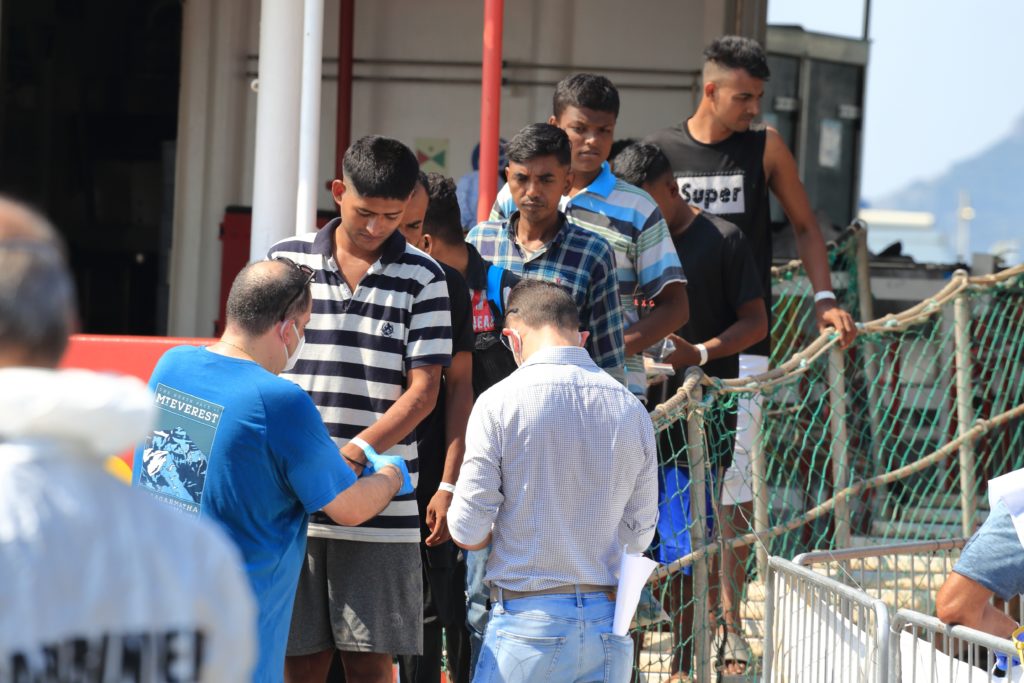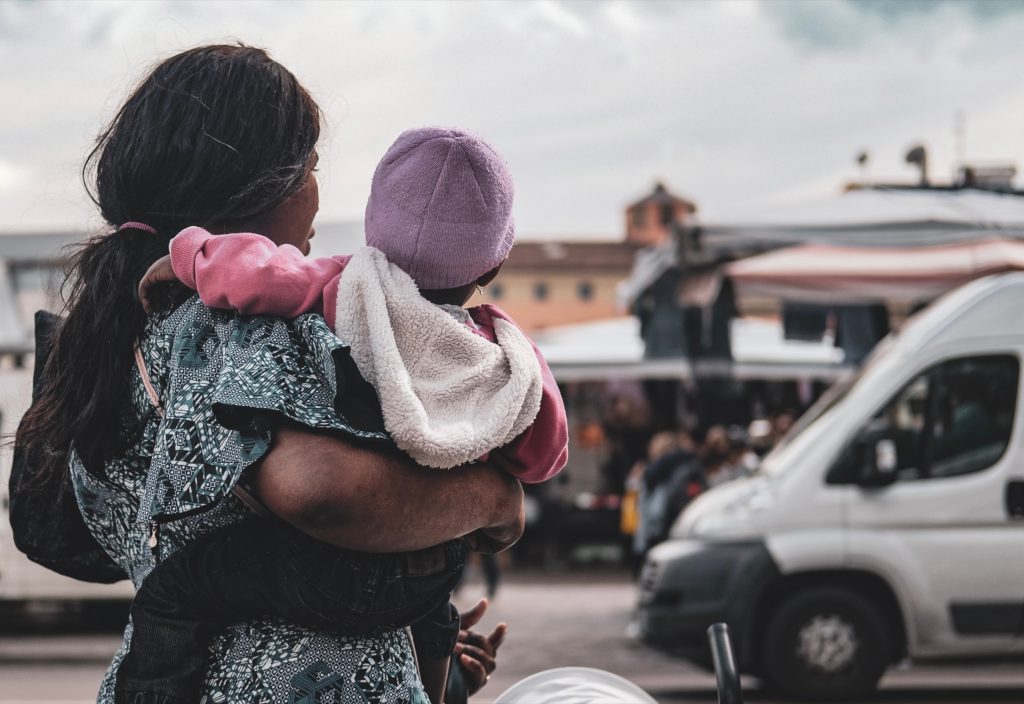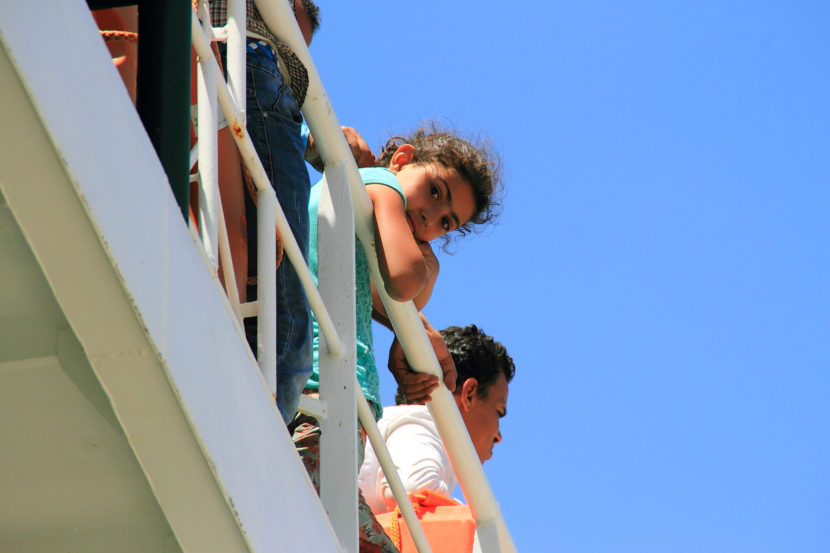Migrant children in Italy are facing systemic discrimination and exclusion driven by the country’s entrenched migration policies. Instead of providing protection and opportunity, Italian laws and practices increasingly isolate young migrants from society, further stripping them of their rights to education, health care, and safety—rights which are guaranteed under international law. The worsening political climate and deliberate legislative changes continue to marginalize one of the most vulnerable groups in the country.
Migration to Italy by the numbers
In 2022, it was recorded that 138,420 non-EU nationals were in Italy ‘illegally’, while in 2021, 92 070 cases were registered. Estimates of the actual number of irregular migrants in Italy, however, exceed 500 000 (ECRI, 2024). In the first few months of 2024 alone, around 55 000 people, of whom more than 6 350 were unaccompanied children, reached Italy via the sea. Even more worrisome, overall statistics demonstrate a significant increase in the use of other routes to arrive in Italy (Human Rights Watch, 2025).
Italian laws are putting migrants’ rights at risk
Italy is led by a hard-right nationalist party which has implemented offshore processing of asylum claims, actively outsourced repressive migration controls to countries with a questionable human rights track record, and obstructed humanitarian rescues at sea, which occurred at least 25 times in the period between February 2023 and September 2024 (Human Rights Watch, 2025).
Since then, the authorities have been empowered to impose fines and detain NGO aircrafts trying to provide help to migrants at sea (Human Rights Watch, 2025). These actions violate Italy’s international obligations under the Convention on the Rights of the Child, which it ratified in 1991.
Italy has recently also adopted legislation that directly affects the protection of migrants, asylum seekers and refugees. This has increased their vulnerability to human rights violations, particularly violations of their rights to life and security. The legislation in question includes Law 132/2018 of 1 December 2018 on immigration and security and Law 50/2023 of 6 May 2023, commonly referred to as the ‘Cutro Law’, named after the Calabrian town, where a tragic shipwreck in 2023 prompted the law’s drafting (Committee on the Elimination of Racial Discrimination, 2023).
The law’s direct consequences include greater difficulties for migrants and asylum seekers in accessing the refugee status determination procedure and international protection. It also leads to deplorable living conditions in reception centres for migrants and a further reduction in the availability of psychological and legal services (Committee on the Elimination of Racial Discrimination, 2023).
In addition, the accelerated border procedures introduced in 2023 for the processing of asylum applications from persons originating from countries designated as “safe” by Italy continue to be challenged under law (Amnesty International, 2024).
To add to these challenges, the Zampa law entered into force in March 2027 but has yet to be fully implemented. The adoption of the law was supposed to help unaccompanied migrant children in their access to healthcare, education and legal representation. However, Italy has not made sufficient funding and capacity available to provide these services to date (Forced Migration Review, 2025).
Discrimination and systemic racism against migrant children
For years now, Italy has demonstrated widespread racist discourse, stigmatisation and negative stereotyping targeted towards migrants. The preponderance of cases of violence against individuals belonging to ethnic minorities reported in this context pertains to violence against individuals with a migrant background and individuals of African descent. In 2022 alone, there were 47 cases of this kind of violent assault reported to authorities, the majority of which included physical assaults being committed against migrants, with some resulting in serious injury (United Nations High Commissioner for Human Rights, 2019; ECRI, 2024).
The UN Independent Expert Mechanism to Advance Racial Justice and Equality in Law Enforcement has raised concerns about racial profiling by police, the disproportionate incarceration of Africans and people of African descent, and the lack of comprehensive race-based data, among other signs of systemic racism (Human Rights Watch, 2025).
Within Italy, the exclusion of migrants from the fabric of society engenders profound social tensions and a palpable sense of insecurity. The ongoing challenges faced by ethno-religious groups, particularly Muslims, due to institutional racism and societal attitudes, remain a major concern (Committee on the Elimination of Racial Discrimination examines the report of Italy, 2016; UNHCR, 2018).
Additionally, the deeply entrenched racism directed towards Afro-Italians by wider society is of great concern, as it indicates a reluctance to fully embrace this group (Committee on the Elimination of Racial Discrimination examines the report of Italy, 2016; UNHCR, 2018).
Reports by international organisations have repeatedly denounced Italy for its failure to address the legal exclusion migrants and for perpetuating a system that entrenches social disparities. Even today, the lack of relevant official data is one of the main difficulties in assessing the extent of discrimination experienced by migrants and the impact of anti-discrimination measures suffered by migrants (ECRI, 2024; European Student Think Tank, 2025).
Bureaucratic barriers and risk of exclusion
Migrant children in Italy often face delays when applying for residence permits or identity documents—processes essential for accessing basic human rights. Without these documents, they are excluded from both public and private services. Over time, this lack of legal protection can block access to government benefits, delay or prevent applications for naturalisation, and even make it impossible to register a legal residence (ECRI, 2024).

Housing is another area where children are vulnerable. While beneficiaries of international protection and unaccompanied minors should, by law, have access to the Reception and Integration System, not all are offered placements due to a lack of space. Even when granted a spot, children are typically allowed to stay only for six months, after which they are expected to secure independent housing, unrealistic expectations for many young migrants without family or financial support (ECRI, 2024).
Barriers to education, healthcare, and protection
Education is legally guaranteed to all children in Italy, regardless of their immigration status. However, migrant children often find themselves placed in classes below their skill level, mainly due to language challenges. This misplacement leads to delays in their academic progress and contributes to higher dropout rates compared to their Italian peers. Bullying is also more commonly reported among migrant children, further alienating them from the school environment (ECRI, 2024; Journal of Ethnic and Migration Studies, 2011).
Access to healthcare, though guaranteed in law for asylum seekers and beneficiaries of protection, remains uneven in practice. Registering with the National Health Service involves administrative hurdles and often requires a contribution—though exemptions are theoretically available for those with limited means. In practice, many migrants struggle to access these exemptions due to a lack of clear information, language barriers, and a shortage of cultural mediators. These gaps are often worsened by insufficient training and awareness among local officials and healthcare providers (ECRI, 2024).
Migrant children living without regular status are particularly vulnerable to poverty and exploitation. Many live in informal settlements or are unhoused altogether. Fear of deportation discourages them and their families from reporting labour abuses, especially in sectors like agriculture and domestic work, where exploitation is known to occur. The shared experienced is described by migrants as “degrading living conditions and homelessness” (United Nations High Commissioner for Human Rights, 2019).
Strengthening support for migrant children in Italy
Some positive developments, such as the creation of reception centres for unaccompanied migrant children, deserve recognition. However, ongoing negative political narratives continue to challenge efforts to integrate migrants, while the work of NGOs providing critical support remains under pressure (United Nations, 2023; ECRI, 2024).
To improve conditions for migrant children, practical steps are needed. More specifically, Italy needs to take concrete steps to strengthen support in key areas. In education, this includes ensuring there are enough school places near reception centres and migrant communities, reliable transportation to and from school, and adequate language support (ECRI, 2024).
In addition to that, institutional reforms are also necessary. Establishing an independent equality body and reinforcing the National Office against Racial Discrimination would help coordinate efforts to reduce inequality. A national action plan focused on anti-racism, supported by public awareness campaigns, could contribute to more inclusive policies and attitudes (ECRI, 2024).
Currently, Italy lacks detailed data on socio-economic conditions by ethnic background. This gap limits the development of effective anti-discrimination measures. Following international recommendations, such as those from the Committee on the Rights of the Child, will be essential to ensure that the rights of migrant children are fully respected and protected (Committee on the Rights of the Child, 2017; Committee on the Elimination of Racial Discrimination, 2023).

Humanium, as a child-right organisation actively conducting numerous projects worldwide, remains committed to safeguarding children’s rights to education, health, and protection. If you want to contribute to Humanium’s specific causes to improve children’s lives, please consider making a donation, volunteering or becoming a member.
Written by Moïra Phuöng Van de Poël
Bibliography:
Amnesty International (2024). Italy 2024. Retrieved from Amnesty International at https://www.amnesty.org/en/location/europe-and-central-asia/western-central-and-south-eastern-europe/italy/report-italy, accessed in May 2025.
Committee on the Rights of the Child (2017, November 16). Joint General Comment No. 3 of the CMW and No. 22 of the CRC in the context of International Migration: General principles. Retrieved from the Committee on the Rights of the Child at https://www.ohchr.org/en/documents/general-comments-and-recommendations/joint-general-comment-no-3-cmw-and-no-22-crc-context, accessed in May 2025.
Committee on the Elimination of Racial Discrimination examines the report of Italy (2016, December 2). Italy reviewed. Retrieved from Committee on the Elimination of Racial Discrimination examines the report of Italy at https://www.ohchr.org/en/press-releases/2016/12/committee-elimination-racial-discrimination-examines-report-italy, accessed in May 2025.
Committee on the Elimination of Racial Discrimination (2023, August 31). Concluding observations on the 21st periodic report of Italy. Retrieved from Committee on the Elimination of Racial Discrimination at https://immigrazione.it/docs/2023/cerd-concluding-observations-italy.pdf, accessed in May 2025.
ECRI (2024, July 2). ECRI Report on Italy – Sixth monitoring cycle. Retrieved from ECRI at https://rm.coe.int/sixth-ecri-report-on-italy/1680b205f5, accessed in May 2025.
ECRI (2024, October 22). News of the European Commission against Racism and Intolerance. Retrieved from ECRI at https://www.coe.int/en/web/european-commission-against-racism-and-intolerance/-/italy-should-set-up-an-independent-and-effective-equality-body-and-do-more-to-counter-hate-speech, accessed in May 2025.
European Student Think Tank (2025). Italy’s Citizenship Paradox: The Contradictions of Ius Sanguinis. Retrieved from European Student Think Tank at https://esthinktank.com/2025/05/01/italys-citizenship-paradox-the-contradictions-of-ius-sanguinis/, accessed in May 2025.
Forced Migration Review (2025, May). Italy’s ‘Zampa’ law: increasing protection for unaccompanied children. Retrieved from Forced Migration Review at https://www.fmreview.org/syria2018/lelliott/, accessed in May 2025.
Human Rights Watch (2025). Italy – Events of 2024. Retrieved from Human Rights Watch at https://www.hrw.org/world-report/2025/country-chapters/italy, accessed in May 2025.
Journal of Ethnic and Migration Studies (2011). The Delayed School Progress of the Children of Immigrants in Lower-Secondary Education in Italy. Retrieved from Journal of Ethnic and Migration Studies at https://www.tandfonline.com/doi/abs/10.1080/1369183X.2012.640014, accessed in May 2025.
UNHCR (2018, November 21). Legal changes and climate of hatred threaten migrants’ rights in Italy, say UN experts. Retrieved from UNHCR at https://reliefweb.int/report/italy/legal-changes-and-climate-hatred-threaten-migrants-rights-italy-say-un-experts, accessed in May 2025.
United Nations (2023, August 9). Experts of the Committee on the Elimination of Racial Discrimination Congratulate Italy on Reception Centres for Unaccompanied Minors, Ask about Racism in Sport and Hate Crimes against Roma, Sinti and Camminanti Communities. Retrieved from United Nations at https://www.ungeneva.org/en/news-media/meeting-summary/2023/08/examen-du-rapport-de-litalie-devant-le-comite-pour-lelimination, accessed in May 2025.
United Nations High Commissioner for Human Rights (2019). Report of mission to Italy on racial discrimination, with a focus on incitement to racial hatred and discrimination. Retrieved from United Nations High Commissioner for Human Rights at https://www.ohchr.org/sites/default/files/Documents/Countries/IT/ItalyMissionReport.pdf, accessed in May 2025.


